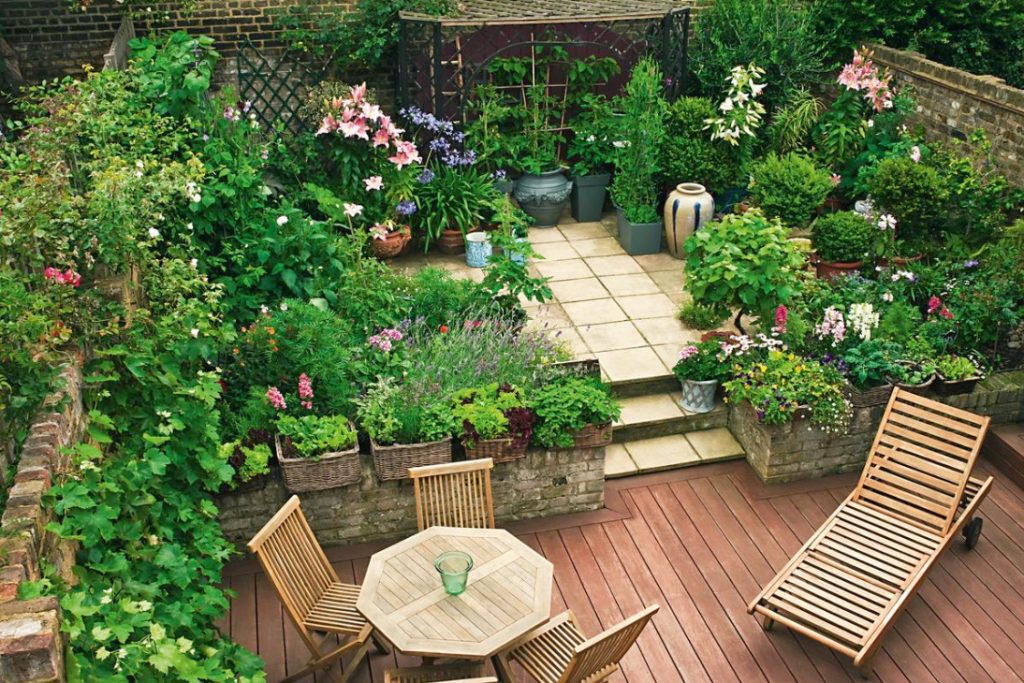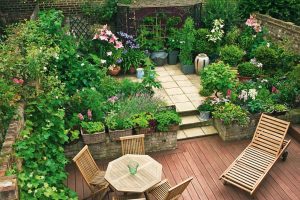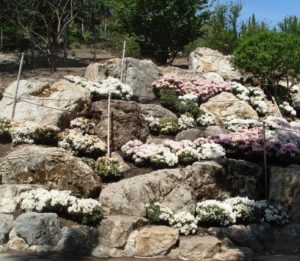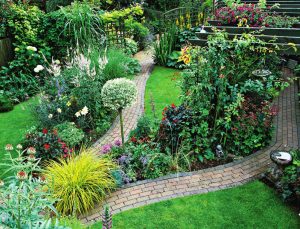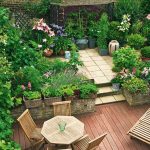It is only necessary to slightly change the landscape of your favorite country lands — and the garden will be transformed beyond recognition. This effect is neither decor, nor a radical change of plants or accessories can not be achieved.
This method of “renovation” of the garden — space complication – without a stretch can be called revolutionary, because it not only involves the maximum available area, but there is also an additional one. The explanation is simple: in most cases, the space does not change visually, but physically. Using this design technique completely distracts attention from the shape and size of the garden and allows you to create extremely beautiful and rational landscapes. And for residents of places with a problematic climate there is a nice bonus: thanks to the spatial elements in the garden, the disadvantages of natural conditions are “smoothed out”: lack of heat and excess moisture.
In order to transform the garden, it is enough to use one of the five principles, which we will discuss below. But if you want to create the impression of a completely new space, apply them all at the same time.
1. Creation of multilevel architectural
You will get, in fact ,a “multi-storey” garden. Thus all “floors” can be involved, filling with various elements of landscape design. Multilevelness is achieved in two ways: you can use the natural terrain of the site or build special structures that will create artificial elevation changes. For example, if the site has a pronounced relief or is on a slope-let this relief works for you. Arrange retaining walls and steps, all kinds of podiums and recreation areas.

The latter can be erected not only by the technology of “classical” retaining walls, but also decorated as hanging viewing platforms and balconies, where part of the site rests on the slope, and part-on strong piles. They, in turn, should have a reliable Foundation laid to the depth of freezing. After all the transformations, the plot will be a system of large and small terraces, the area of which is used to the maximum. On the terraces you can break flower beds, sow a lawn, build a gazebo, plant trees and shrubs, build a bath and even arrange a small pond.
Important: successfully fit into one of the large terraces of the garden and, by the way, the lighting and conditions of care for the beds here will not be an example better than on the site, located obliquely. The level drop can be used to create a stream or mini waterfall.

All terraces are ideal for the device “design” lighting: when the lights are on different levels, you can implement different ideas, “play” different “scenarios” of illumination.
And how wonderfully fit into the terraced garden Alpine slides and rock gardens! Here you can fully enjoy the beauty of the stone — its brutal restraint “in volume” looks even more spectacular. All created levels of the garden should do “useful work”, be involved. How — depends on the size of the “floors”:
- If this is a large-scale area, place a Seating area with barbecue for a large company.
- Very small can simultaneously be an original bench built into the landscape — you just need to choose the right cover for the seat.
- Between the terraces built a significant difference in height? Great, this should be used! For example, built directly into the slope decorative grotto or outbuildings.
- And even if you have a completely flat plot, the dream of a multi-level garden is feasible: when there is no relief, it must be organized. To obtain the effect, 3-4 levels with a difference in height of at least 20 cm are enough.and the missing relief can be created partly due to the import of soil and the creation of bulk retaining walls, partly due to special multi — level structures: podiums, decking. They are built on a high Foundation or completely fixed on piles.
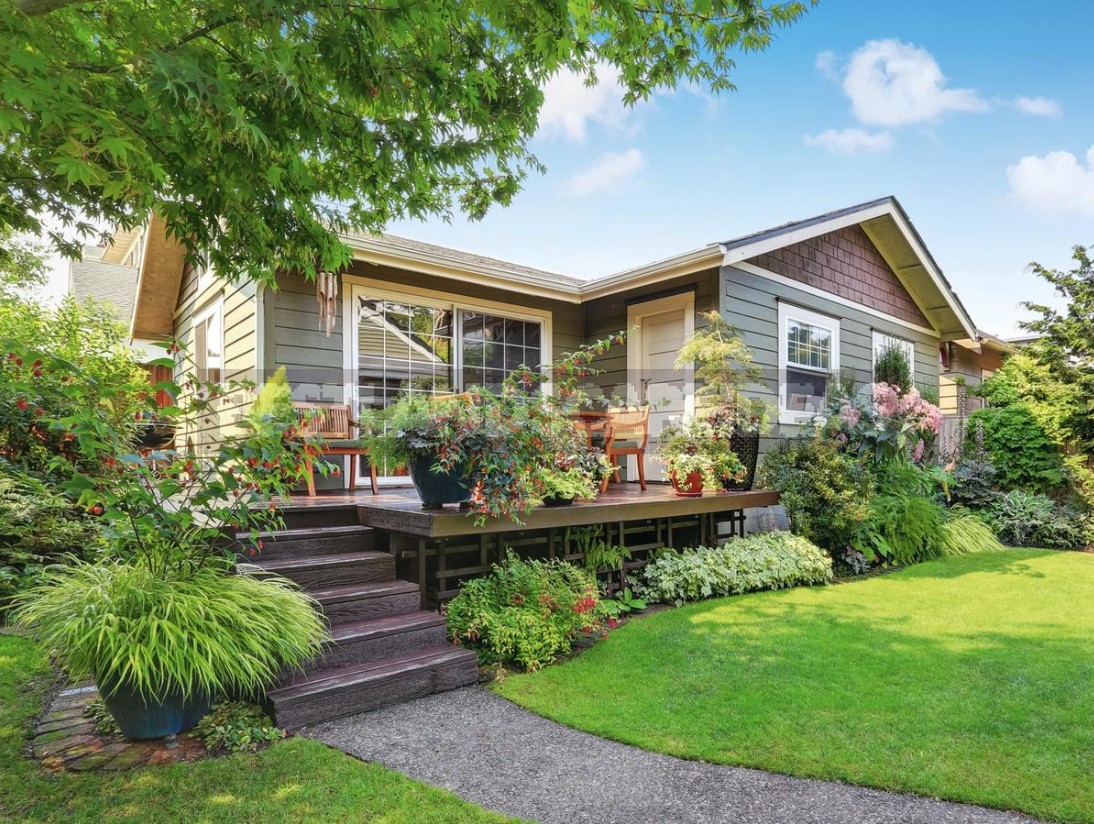
A variety of bridges — both real and decorative — have over ponds or “dry” streams (pebble or flower “channels”).
And here’s another idea: place on a high Foundation gazebo with steps, which will be built small flower beds (then there you can arrange plants in pots), or which will be at the same time and benches.
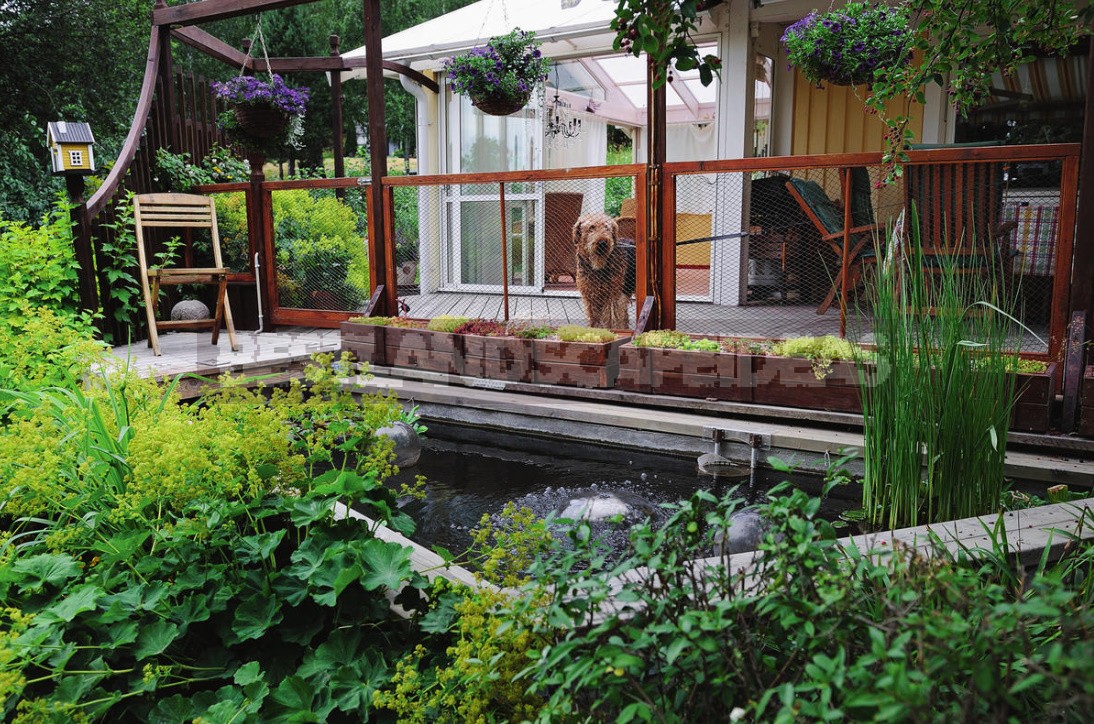
High flowerbeds with additional “options” are also attributes of a “spatial garden”. On one of the tiers of the flower bed, place a fountain or garden lamps, garden figures on the second, on the third-the flower garden itself.
Creating levels in the garden, not only move up, but also down: the so-called recessed gardens and recreation areas-designer piece thing, and while they are still rare in our gardens, become a “pioneer”! These spectacular garden objects give the impression of a larger area of the site than it actually is.
2. Organization of vertical gardening
These elements of garden architecture are expressive and very popular. Thanks to them, the space of the garden becomes more interesting and deeper, different dimensions appear in it. Just do not forget that vertical gardening is planned in advance, at the construction stage, as it is associated with the” engineering part ” of the garden. Supports here “work” on an equal footing with plants and can be both visible and hidden, for example, removable synthetic nets or wire stretched between pegs. Walls of buildings and fences are also an option.
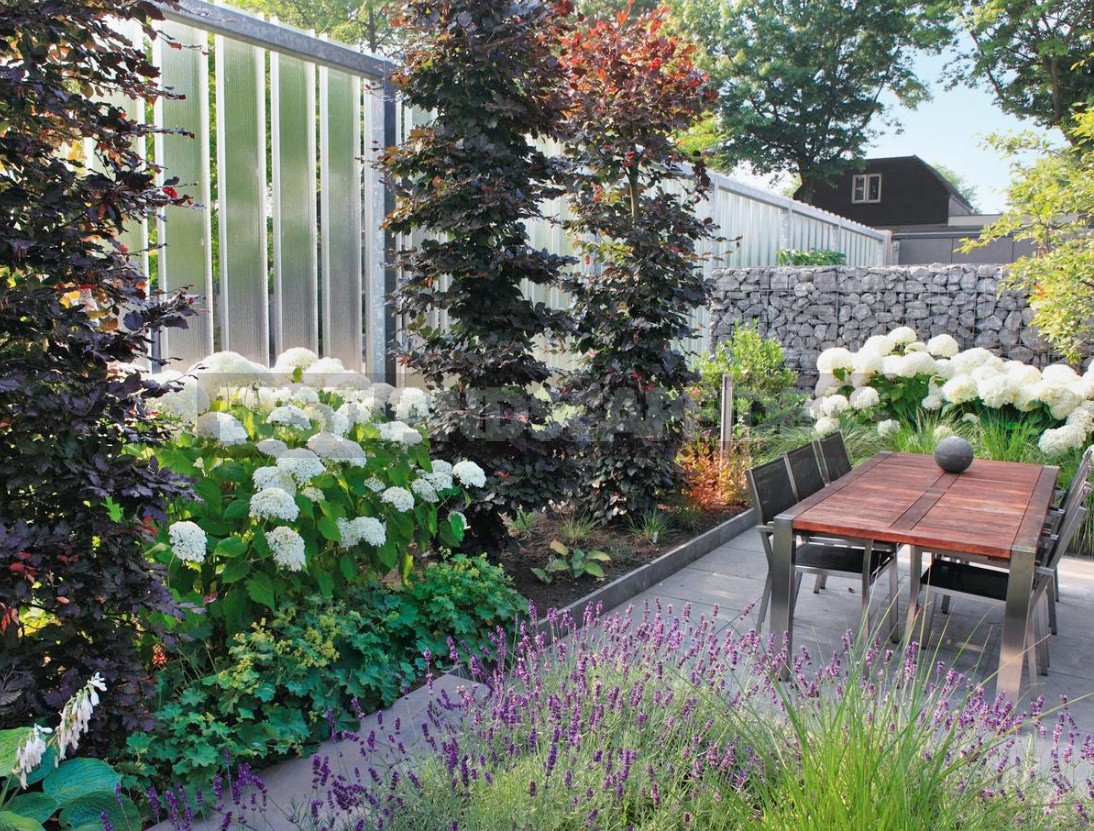
Or choose the usual decorative supports: garden screens, pergolas, trellises, arches, trellises, turrets-columnar, made of thin metal pipes, wood or forged elements. For a Japanese-style garden, bamboo is the most appropriate.
And if you want something non-standard, use as supports “objects” that are in your garden: dead trees, picturesque large driftwood, tall lamps, drainpipes…
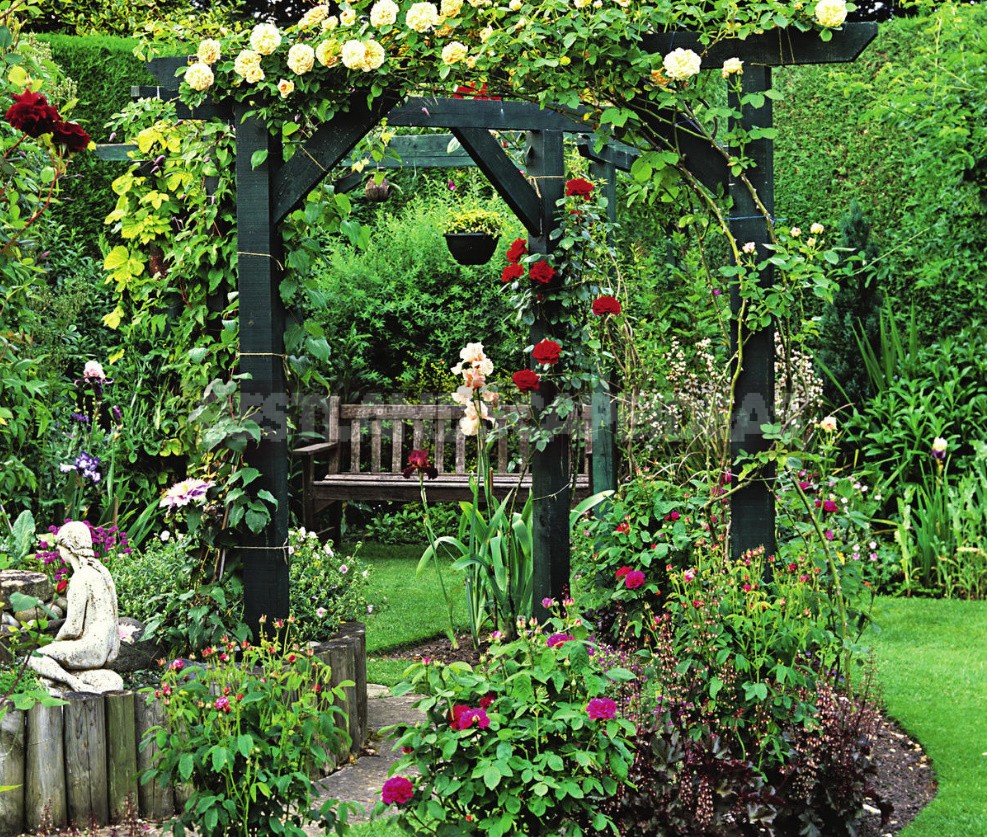
In the role of “green wall” can act as annuals and perennials, but it is best to combine them. Do not aspire to the exotic, it will be more rational to choose the most unpretentious, requiring minimal care frost-resistant plants. Win-win “candidates” – Parthenocissus or Vitis amurensis, Humulus lupulus, Clematis, Actinidia kolomikta, Schisandra chinensis, Lonicera caprifolium, wattle roses, Ipomoea purpurea, Lathyrus odoratus, Tropaeolum, decorative beans, decorative pumpkin.
Important: when choosing a support, consider the needs of its “green companions”. Imagine how the plant will climb on the support, it just needs a rough surface, a grid, columns or something else. After all, if some vines “walk” on a flat surface, and others-cling tendrils or petioles of leaves or stem twisted around the base, the third need to tie up, as they do not have any “devices” to help climb up.
Summing up, we note: vertical gardening is a universal “decorator”, with its help you can completely disguise a shed, garage, compost heap, unsightly fence or joints of structures.
